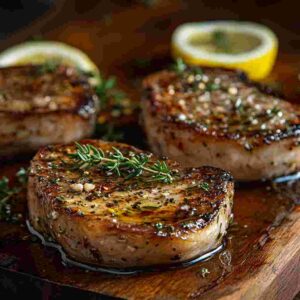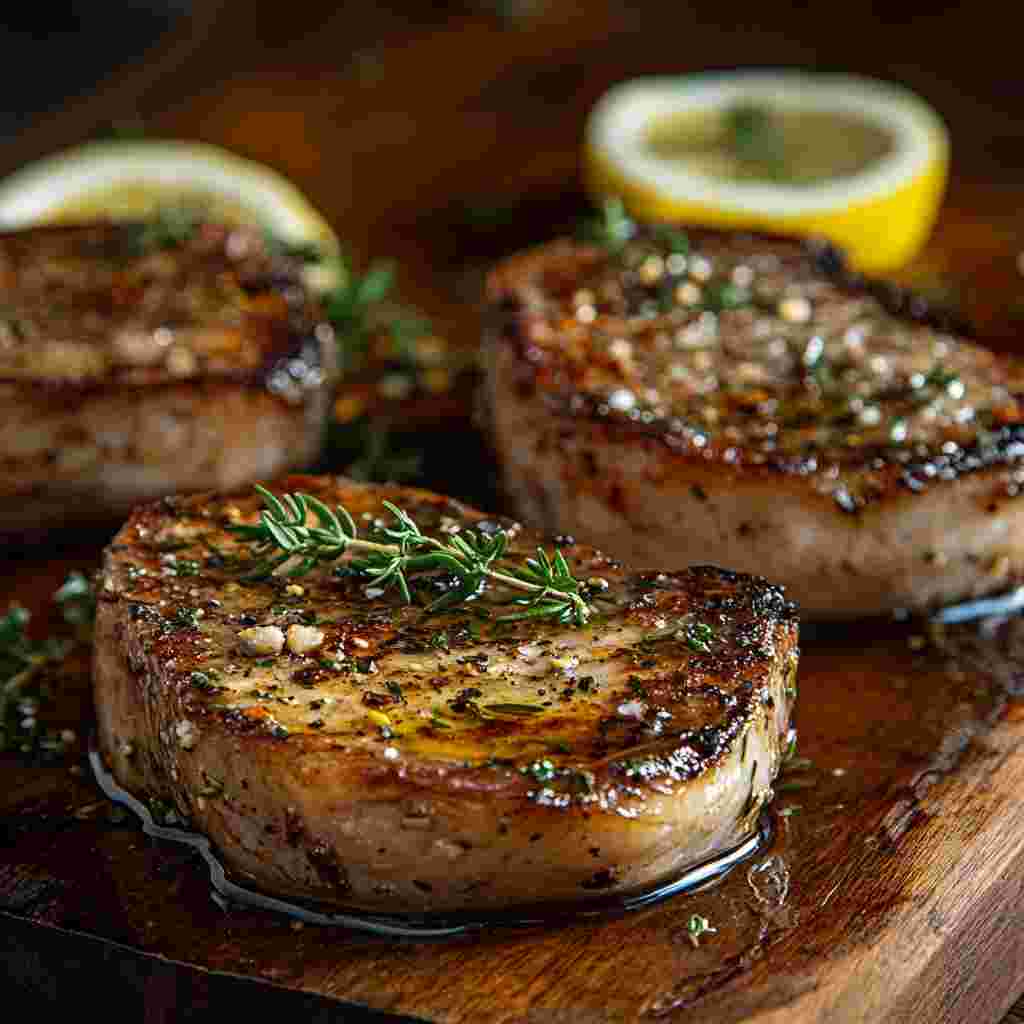Oyster steak is a lesser-known but incredibly tender and flavorful cut of beef. This cut comes from a small muscle located near the cow’s backbone, known for its tenderness and rich beefy flavor. Despite its name, oyster steak has no connection to seafood; rather, its name likely derives from the steak’s oyster-like shape. When cooked properly, it offers a delicious, melt-in-your-mouth experience.
Oyster steak is perfect for those seeking an affordable yet high-quality steak option. It cooks quickly and works well with a variety of seasoning blends, marinades, and sides. Whether you prefer it grilled, seared, or broiled, this cut of beef delivers a satisfying meal that rivals more expensive cuts. Plus, its versatility allows for easy adaptation to different cuisines and flavor profiles.
If you’ve never tried cooking oyster steak before, now’s the time to add this tender and flavorful cut of beef to your repertoire. Let’s dive into the step-by-step instructions for creating a restaurant-quality oyster steak at home, complete with tips, variations, and side dish suggestions.
For a satisfying side dish, consider serving your oyster steak alongside this Baked Pasta with Cream Cheese for a rich, creamy complement.

Ingredients Overview
The key to preparing a perfect oyster steak lies in using fresh ingredients and a few simple seasonings to let the beef’s natural flavor shine. Here’s what you’ll need:
- Oyster steak – A tender cut of beef, typically weighing around 4-6 ounces per steak.
- Olive oil or butter – Essential for searing the steak and adding a rich flavor.
- Garlic – Adds a savory aroma and flavor to the dish.
- Fresh herbs – Rosemary and thyme are excellent choices for enhancing the steak’s flavor.
- Salt and pepper – Basic seasonings that bring out the natural taste of the beef.
- Optional seasonings – Paprika, smoked sea salt, or steak seasoning blends can add extra flavor.
- Lemon juice or balsamic vinegar – Adds a touch of acidity, balancing the richness of the steak.
Step-by-Step Oyster Steak Recipe
1. Prepare the Steak
Ingredients:
- 2 oyster steaks (about 4-6 ounces each)
- 2 tablespoons olive oil (or 1 tablespoon butter)
- 3 garlic cloves, minced
- 2 sprigs fresh rosemary
- 2 sprigs fresh thyme
- Salt and pepper to taste
- 1 tablespoon lemon juice or balsamic vinegar (optional)
Instructions:
- Season the steaks: Remove the steaks from the refrigerator about 30 minutes before cooking to bring them to room temperature. Pat the steaks dry with paper towels and generously season both sides with salt and pepper. You can also add a pinch of paprika or smoked sea salt for an extra layer of flavor.
- Heat the pan: Heat a cast-iron skillet or heavy-bottomed pan over medium-high heat. Add the olive oil or butter and let it melt and heat until shimmering.
- Sear the steaks: Place the oyster steaks in the hot skillet. Sear each side for 2-3 minutes, or until a deep golden-brown crust forms. Be careful not to move the steaks around too much—this allows the crust to develop.
- Add garlic and herbs: Once the steaks have seared on both sides, add the minced garlic, rosemary, and thyme to the skillet. Baste the steaks with the garlic and herbs, using a spoon to continuously pour the hot oil or butter over the meat.
- Finish with lemon juice or balsamic vinegar: For added flavor, drizzle the steaks with lemon juice or balsamic vinegar during the last 30 seconds of cooking. This adds a bright, tangy finish that complements the richness of the beef.
- Rest the steaks: Remove the steaks from the pan and let them rest for 5 minutes before serving. Resting allows the juices to redistribute, making the steaks tender and juicy.
2. Optional Grilling Method
Instructions:
- Preheat the grill: Heat your grill to medium-high heat. Make sure the grates are clean and lightly oiled to prevent the steaks from sticking.
- Grill the steaks: Place the seasoned oyster steaks on the grill. Cook for 3-4 minutes on each side, depending on the thickness, until the internal temperature reaches 130°F for medium-rare or 140°F for medium.
- Baste with garlic and herbs: During the last minute of grilling, baste the steaks with melted butter or olive oil mixed with minced garlic and herbs. This adds extra flavor and moisture to the steaks.
- Rest and serve: Allow the steaks to rest for 5 minutes before slicing and serving.

Tips for Making the Best Oyster Steak
1. Choose Quality Meat
- Look for fresh, well-marbled oyster steaks from a trusted butcher or meat market. The quality of the meat plays a significant role in the flavor and tenderness of the steak. Grass-fed beef typically has a deeper, more intense flavor, while grain-fed beef can offer a slightly sweeter, richer taste.
2. Don’t Overcook the Steak
- Oyster steak is naturally tender and should be cooked to medium-rare or medium. Cooking it beyond this point can make the meat tough and dry. Use a meat thermometer to check for doneness, aiming for an internal temperature of 130°F for medium-rare.(Learn how to use a meat thermometer for perfect doneness)
3. Rest the Steak
- Allowing the steak to rest after cooking is crucial for preserving its juices. Cutting into the steak too soon can cause the juices to run out, leaving the meat dry. Resting for 5-10 minutes allows the juices to redistribute, ensuring a juicy, tender steak.
4. Baste for Extra Flavor
- Basting the steak with melted butter, garlic, and herbs while cooking adds richness and enhances the flavor. For a smoky twist, try adding smoked paprika to the basting mixture.
5. Cook in Cast Iron
- A cast-iron skillet is ideal for cooking oyster steak because it retains heat well and helps develop a rich, golden crust on the meat. If you don’t have cast iron, a heavy-bottomed stainless-steel pan works well too.
For a side dish that complements the steak, try this Creamy Rasta Pasta, which pairs well with the rich flavors of beef.
Variations of Oyster Steak
Oyster steak is versatile and can be prepared in a variety of ways. Here are a few ideas for customizing this recipe:
1. Oyster Steak with Chimichurri
- Serve the steak with a homemade chimichurri sauce made from fresh parsley, garlic, olive oil, red wine vinegar, and chili flakes. This Argentine-style preparation adds a fresh, herbaceous flavor that balances the richness of the steak.
2. Garlic Butter Oyster Steak
- After searing the steak, top it with a generous dollop of garlic butter made with softened butter, minced garlic, parsley, and lemon zest. The garlic butter melts over the hot steak, creating a luxurious and flavorful finish.
3. Oyster Steak with Mushrooms
- Sauté mushrooms with garlic and thyme in the same skillet used to cook the steak. Serve the steak topped with the sautéed mushrooms for an earthy, savory addition that complements the beef.
4. Asian-Inspired Oyster Steak
- Marinate the steaks in a mixture of soy sauce, sesame oil, garlic, and ginger for an Asian-inspired twist. Grill or sear the steak as usual, and serve with a sprinkle of sesame seeds and green onions.
5. Spicy Cajun Oyster Steak
- Rub the steaks with a blend of Cajun spices, including paprika, cayenne pepper, garlic powder, and onion powder, before cooking. This adds a bold, spicy kick to the dish.
6. Oyster Steak Tacos
- For a fun twist, slice the cooked oyster steak thinly and serve in soft tortillas with fresh salsa, avocado, and cilantro. This variation turns the steak into a delicious taco filling, perfect for casual dinners or gatherings.
Nutritional Benefits
While steak is often considered an indulgence, it also offers several nutritional benefits:
1. High in Protein
- Oyster steak is a great source of high-quality protein, which is essential for building and repairing tissues. Protein also helps keep you full and satisfied, making it an ideal choice for a hearty meal.
2. Rich in Iron
- Beef is an excellent source of heme iron, which is more easily absorbed by the body than plant-based sources of iron. Iron is important for producing red blood cells and preventing anemia.
3. Contains Essential Vitamins
- Oyster steak is packed with essential vitamins like B12, which supports brain function and energy production. It also contains other B vitamins like niacin, which helps maintain healthy skin and digestion.
4. Healthy Fats
- While steak contains saturated fats, it also provides healthy fats that support brain function and hormone regulation. Grass-fed beef, in particular, contains higher levels of omega-3 fatty acids, which have anti-inflammatory properties.
History and Popularity
The oyster steak is a hidden gem in the world of beef cuts. While it’s less common than more popular cuts like ribeye or sirloin, it has gained recognition for its tender texture and rich flavor. Oyster steak comes from a small muscle that sits on the cow’s backbone, just above the rump. Despite being small, it’s incredibly flavorful due to the muscle’s limited use, which contributes to its tenderness.(Read more about different beef cuts and where they come from)
Oyster steak is popular in parts of Europe and the United States, especially among butchers and chefs who appreciate its quality and value. As consumers seek out more affordable yet premium cuts of beef, oyster steak has become a go-to option for those in the know.
This cut is often compared to hanger steak or flat iron steak, both of which share similar tenderness and flavor profiles. However, oyster steak is smaller and slightly more delicate, making it ideal for quick-cooking methods like grilling or pan-searing.
Historically, cuts like oyster steak were reserved by butchers for themselves, often being referred to as “butcher’s cuts.” These flavorful cuts were kept behind the counter, with the higher-priced cuts going to customers. As food enthusiasts have become more adventurous and aware of different cuts, oyster steak has grown in popularity, finding its way onto restaurant menus and into home kitchens.
How to Serve and Store Oyster Steak
1. Serving Suggestions
- Oyster steak pairs well with a variety of sides, from simple roasted vegetables to creamy mashed potatoes. For a more gourmet meal, serve the steak with a side of truffle fries or a crisp arugula salad with a balsamic vinaigrette.
- Consider pairing the steak with a rich, red wine reduction sauce or a tangy chimichurri for added flavor. The steak’s natural tenderness allows it to shine with simple accompaniments.
- For an elegant presentation, slice the steak thinly against the grain and fan the slices out on a plate. Serve with roasted garlic potatoes and sautéed spinach for a well-rounded, restaurant-quality meal.
2. Storing and Reheating
- Leftover oyster steak can be stored in an airtight container in the refrigerator for up to 3 days. To reheat, place the steak in a skillet over low heat, adding a bit of butter or oil to prevent it from drying out.
- Freezing: Oyster steak can be frozen before or after cooking. To freeze raw steak, wrap it tightly in plastic wrap and aluminum foil, and store it in the freezer for up to 3 months. Thaw in the refrigerator before cooking.
If you’re looking for another luxurious beef dish, consider trying Venison Pasta Recipe, which offers a rich, gamey flavor perfect for a hearty meal.
Frequently Asked Questions (FAQs)
1. What is oyster steak, and where does it come from?
- Oyster steak is a small, tender cut of beef taken from the backbone of the cow, located near the rump. It’s prized for its tender texture and rich flavor.
2. Can I marinate oyster steak?
- Yes, oyster steak benefits from a short marinating time, especially if you want to infuse it with additional flavors. A simple marinade of olive oil, garlic, herbs, and lemon juice works well. Marinate the steak for 30 minutes to an hour for the best results.
3. How do I cook oyster steak to medium-rare?
- To achieve a medium-rare steak, cook the oyster steak for 2-3 minutes per side, depending on thickness, until it reaches an internal temperature of 130°F. Use a meat thermometer to ensure accuracy.
4. Is oyster steak a healthy cut of beef?
- Oyster steak is a lean cut of beef that’s high in protein and contains essential vitamins and minerals, including iron and B vitamins. It’s a great choice for those looking to enjoy a tender steak without excessive fat.
5. Can I grill oyster steak?
- Yes, oyster steak is excellent for grilling. The key is to cook it quickly over high heat to develop a good sear while keeping the inside tender and juicy.
6. Can I cook oyster steak in an air fryer?
- Yes, oyster steak can be cooked in an air fryer for a quick and convenient meal. Preheat the air fryer to 400°F, season the steak, and cook for 6-8 minutes, flipping halfway through. Check the internal temperature to ensure it’s cooked to your desired level of doneness.
Conclusion
Oyster steak offers a unique and flavorful alternative to more common steak cuts, delivering tenderness and a rich, beefy taste with every bite. Whether you’re grilling, searing, or basting the steak with garlic butter, this cut is sure to impress at your next meal. With its versatility and rich flavor, oyster steak is quickly becoming a favorite for home cooks and chefs alike.
For more delicious steak ideas, check out this Crab and Shrimp Pasta or try a hearty, comforting Creamy Chicken Alfredo Bake for your next dinner.


1 thought on “Oyster Steak Recipe”